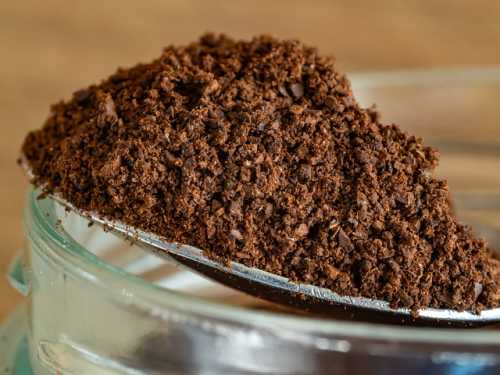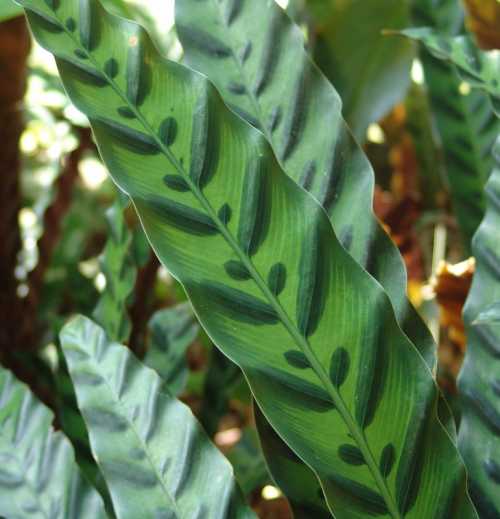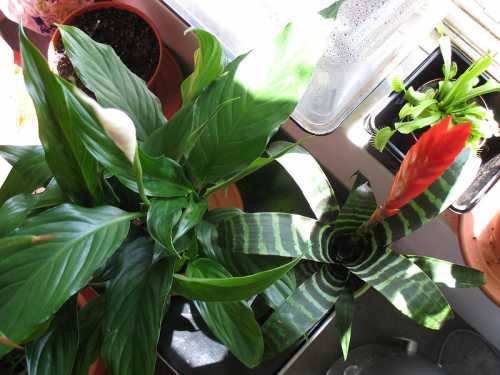Dracaena is a popular houseplant used for ornamental purposes. This plant is well suited for subtropical climates and is suits both indoor and outdoor growing conditions. Their glossy leaf adds beauty to our homes. Dracaena belongs to the asparagus family and comprises about 40 species. These plants grow up to three feet indoors, and it looks like a bushy tree. The outdoor plants can grow up to eight feet.
The most common type of dracaena plant is the yellow-edged Variegata named ‘Song of India’.Interestingly, the dracaena plant possesses a secondary thickening meristem, allowing it to grow wide, thick, succulent roots.
These plants not only add beautiful colour patterns to your room but also improve air quality. To allow your dracaena to exchange air frequently, it is necessary to wipe both the sides of your plant in regular intervals to enhance the colour and texture of your plant. Dracaena plants tolerate a wide variety of growing conditions.
Dracaena plants are very easy to grow indoors when you pay attention to a couple of details. It requires well-drained soil. The soil should be dry between waterings.
Too much dryness and sogginess can be fatal for the plant. The former will result in drying of leaves, and the latter may result in dampness, root rot and fungus formation. For keeping the plant healthy, fertilizing once or twice a year is essential for promoting growth.
This variant is from southeast Africa and is a low-maintenance plant with dark glossy leaves in some variants. Avoiding direct sunlight will ensure proper growth for dracaena. Rotating your plant periodically will ensure even growth on all sides. Also, dusting the leaves regularly can be helpful for effective photosynthesis. Finally, we need to have an eye on the undersides of the pots to avoid pests.
Also Read: Can I Put My Dracaena Outside?
How Much Water Does Dracaena Need?

When we speak in general, this plant needs very less water compared to other variants. Dracaena is generally a drought plant that can withstand dryness, so it usually does not grow soggy; it is better to water the plant 10-14 days once.
This means the soil for this plant can absorb very little water to fulfil the plant’s need for up to two weeks. So if you prefer to water this plant, then check the plant’s soil, and if there is a need in watering the plant, then go ahead and water the plant to leave it for the next two weeks.
Watering dracaena needs some patience because while watering it, you should ensure to use only tepid water to make your leaf fresh. Ensure that the water trickles through the drainage holes and then empty the drainage saucer completely after an hour because flooding your dracaena may lead to change the colour of the leaves, and sometimes it may make your plant dead.
Even the pot should never be filled with water; just allow some droplets of water into the soil and then let the soil absorb it. But never leave your plant to bone dry because this can also kill your plant. Other than flooding it with water, people can leave some droplets of water in the first week and then follow the same every week.
A little water is always better for dracaena but never leave your soil with excessive water. While watering your plant, it is better to clean them with some droplets of water to make them feel fresh.
Most people prefer to place their dracaena in self-watering containers because they have no idea of maintaining a plant. If people find it difficult to maintain the plant, they can start placing it in a self-watering container. This can be a stress reliever for many people because this container can water the plant for many days if refilled once.
Also Read: Why are Dracaena Leaves Turning Yellow and Brown?
- In order to place your plant in a self-watering container, it is necessary to ensure that the plant has grown to some extent. Only then it can come up and absorbs some water. Usually, it takes about four to five weeks for the plant to attain this state, so people need to wait until it reaches the ideal height.
- After four weeks, roots must have grown, and it is now good to drink water by itself, so now people can see a red mark in a self-watering container and have to fill water till the red mark in the container. So make sure that your plant has reached the level to absorb water itself, or people can prefer to top watering the plant for another few days and then shift it into the container.
- After placing your Dracaena in self-watering containers, never top water the leaf because it will make your leaf strong and let leaves let lose their texture and colour, so to avoid this, people can just refill the water and leave it for some days.
- The refilling cycle time may differ because the sizes and the capacity of the container may vary, and people need to check it from the manufacturer before refiling it.
- If you find the reservoir half-empty, then never refill it or refill the container before it empties all the water because refilling it daily will never give time for the leaf to take a breath. Just like you and me, plants also require some rest and breathing time, so to make them breathe, it is required to leave the plant ideal for some time after the container is empty. Then make sure to refill the container after some time to maintain your plant in good condition.
Also Read: Best Potting Soil for Peace Lily Plant

Bottom line
Remember, each plant is a unique living being and have different needs. You may have different varieties of plants, but they should be maintained accordingly to ensure proper growth. For example, one plant may need a lot of water, and plants like dracaena can be maintained well by watering it once a week.
So pay attention to the watering needs of your dracaena for maintaining your dracaena in a better way; by doing this, people can also have a healthy relationship with their plants. I hope this article is informative! Thank you for reading this article.







